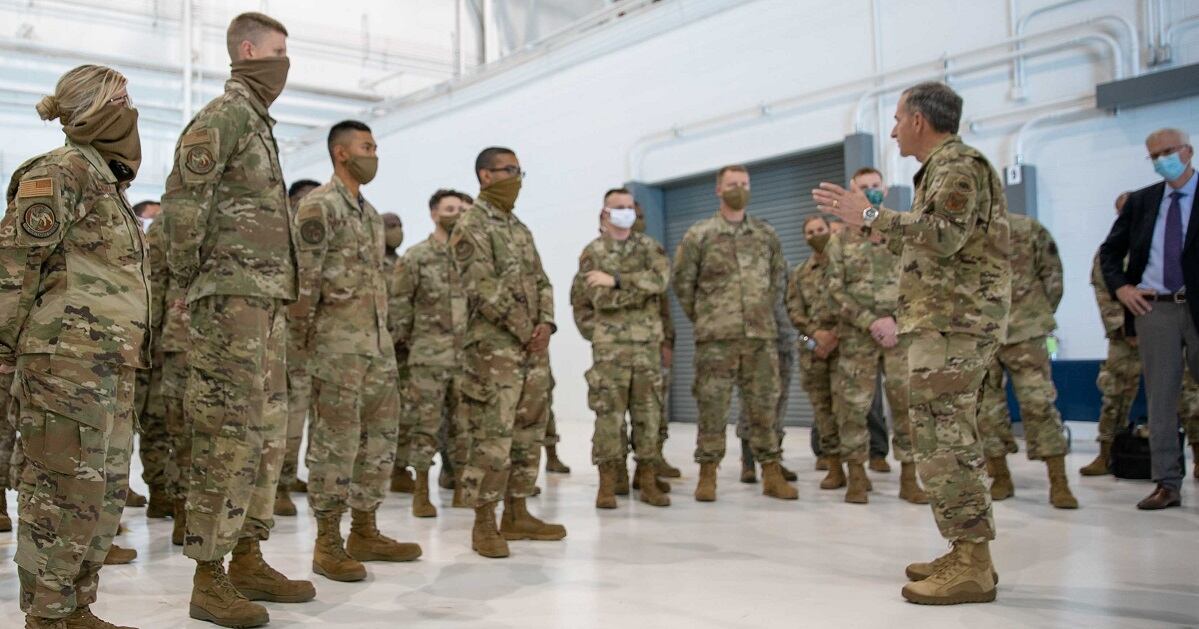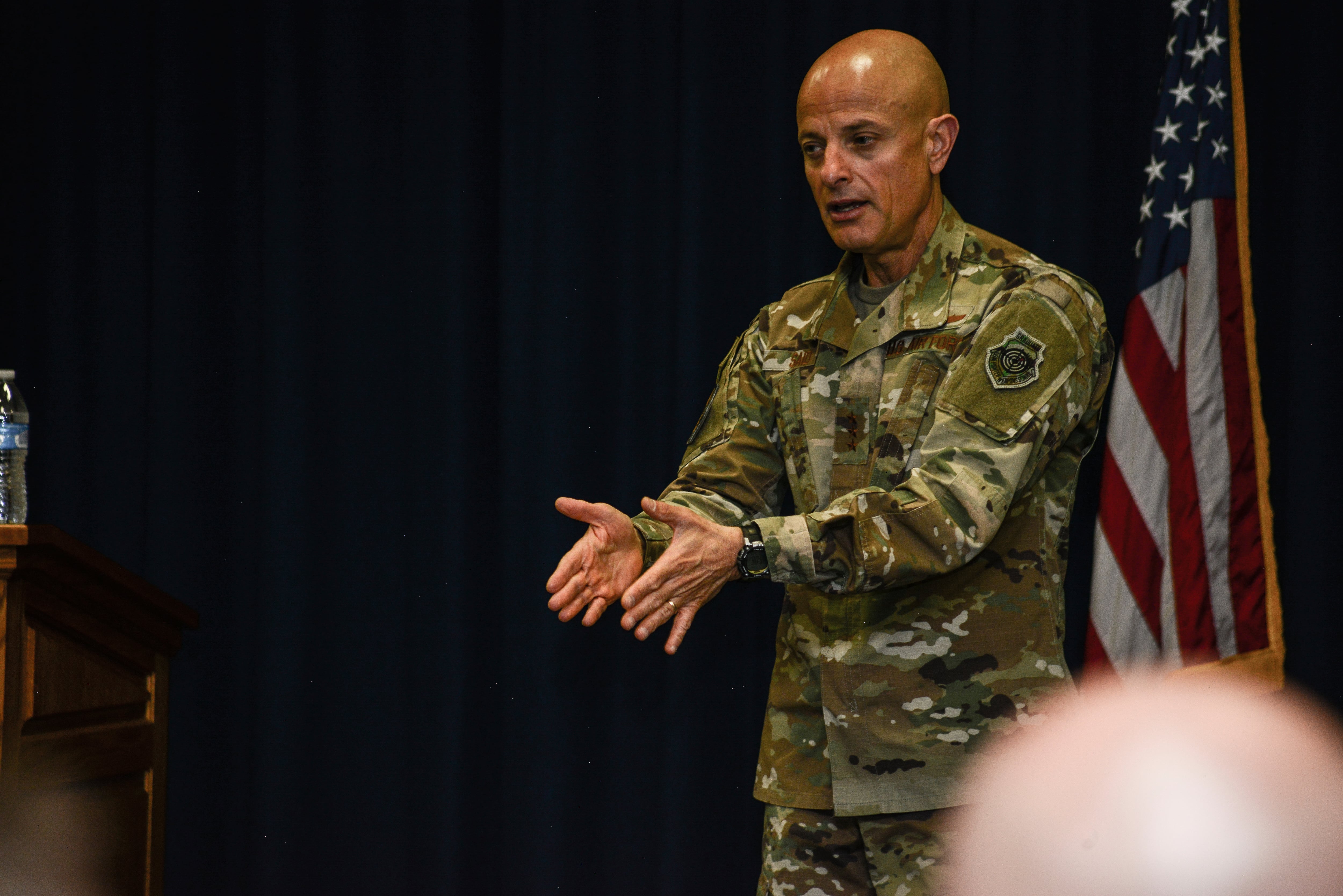The Air Force’s inspector general said Tuesday that his investigation into racial disparities in the service will base its findings on hard data, not anecdotal evidence from its survey, and that he hasn’t leaped to any conclusions.
“There’s definitely no preordained outcome,” Lt. Gen. Sami Said, the Air Force’s IG, said in a phone conversation with Air Force Times. “It is what it is — what the data tells us, what the feedback tells us, will be what we report on.”
Said’s comments came after Air Force Times on Saturday published an op-ed from an officer, Lt. Col. Tibebu Tsegga, who felt the recent Air Force survey on racial equality was skewed to confirm a “pre-determined hypothesis”: that institutional racial disparities exist in the service and that white airmen in charge were its cause.
“[A]necdotal experiences, even if widely publicized, do not conclusively indicate a systemic issue,” Tsegga wrote.
In the interview Tuesday, Said declined to rebut Tsegga’s op-ed directly. And he said he could understand why someone would come to the conclusion, without knowing the entire story of how the IG is approaching this study, that the survey was slanted to produce findings of racial inequality.
RELATED

But, he said, the idea that the IG launched the study with one answer already in mind is “just plain false.” It’s key to remember, he said, that the surveys are far from the only thing investigators are looking at.
“It’s got to be data-based,” Said said. “We’ve looked at every report done on this issue in the past 10 years. This is going to be fact-based, not anecdotal.”
Said said that his investigators have already pulled every bit of data from databases that has anything to do with racial disparities, and are now analyzing that information.
And if disparities exist that hurt Black airmen — the population the IG is focusing on at first — the raw numbers will show where they are, Said said. Or, if there are no disparities, the numbers will show that as well.
The IG is looking from the very beginning of airmen’s Air Force careers ― the moment when a potential officer or enlisted airman is recruited and accessed into the service — to see if that’s where paths start to diverge based on race.
“Do we see disparity there, in our approaches to recruiting folks?” Said said. “What’s happening in the initial training, both officer and enlisted, whether it be [the Air Force Academy, Officer Training School], ROTC or in enlisted training? What’s happening in the first technical schools we send them to?”
Said also wants to study which career fields airmen are put into — including differences between operations career fields and support career fields — to see if any racial disparities emerge in Air Force specialty code assignments.
These kinds of differences early on can limit an airman’s opportunities throughout his entire career. In a 2016 interview, retired Gen. Larry Spencer, the former vice chief of staff, said that most officers who are selected for colonel and above and get picked for the best leadership roles tend to be those in operational roles, such as pilots. But, he said, minority officers tend to end up in support jobs, which effectively limits their opportunities to advance into top leadership roles.
And Said wants to see how access to role models, mentors and feedback differs for Black airmen, as well as disciplinary actions, promotions, assignments, command opportunities and coveted selections to attend school in-residence.
But data itself can’t tell the whole story, Said said. That’s why the Air Force last month sent out an extensive survey to the force to see what airmen’s actual experiences are. Said hopes the responses to the survey will help provide context to the data, or fill in gaps that the data doesn’t illuminate.
The response was “overwhelming,” Said said. In the two weeks it was open, the Air Force received completed surveys from 123,758 airmen — a record-breaking response, he said. Said said surveys were coded so each airman could only respond once, so there are no duplicates.
Airmen also submitted 29,300 single-spaced pages of feedback on racial disparities. Said said those pages are now being quickly read by computers using artificial intelligence to pick up the broad themes and trends airmen commonly wrote about. Humans will also read through those submissions more closely, but it will take months to get through tens of thousands of pages.
The IG also last week wrapped up the last of more than 135 sessions, conducted by three teams that traveled to all major commands, to hold free-flowing discussions with airmen about their experiences with and observations of racial inequality. Said said there was so much interest, teams commonly had to add more sessions and extend them beyond the 90 minutes that were originally blocked out.
And the IG is interviewing dozens of subject matter experts knowledgeable in the various areas under study, he said.
“If people are thinking, we’ve put out a survey, and based on the survey results, we’re going to write a report and conclude something, they are totally missing the point,” Said said. “The amount of data collection and analysis and cross-cutting, thoughtful work is exceptionally extensive. It’s why it’s taking so long. ... I’ve never seen anything like it.”
Said hopes to have a report finished in mid-September, covering both whether Black airmen are treated unequally by the military justice system and promotion, career and other opportunities for Black airmen. But if more interviews or other work need to be done, he said, he won’t rush the report.
Originally, the IG planned to release two reports. The first, on the justice system, was tentatively slated for release in late July or early August. And the second, on career opportunities, would have followed in late September. But Said said that as work began, investigators quickly realized the two issues were intertwined and had the same underlying issues, and breaking them apart to meet certain deadlines would be “short-sighted.”
Stephen Losey is the air warfare reporter for Defense News. He previously covered leadership and personnel issues at Air Force Times, and the Pentagon, special operations and air warfare at Military.com. He has traveled to the Middle East to cover U.S. Air Force operations.





